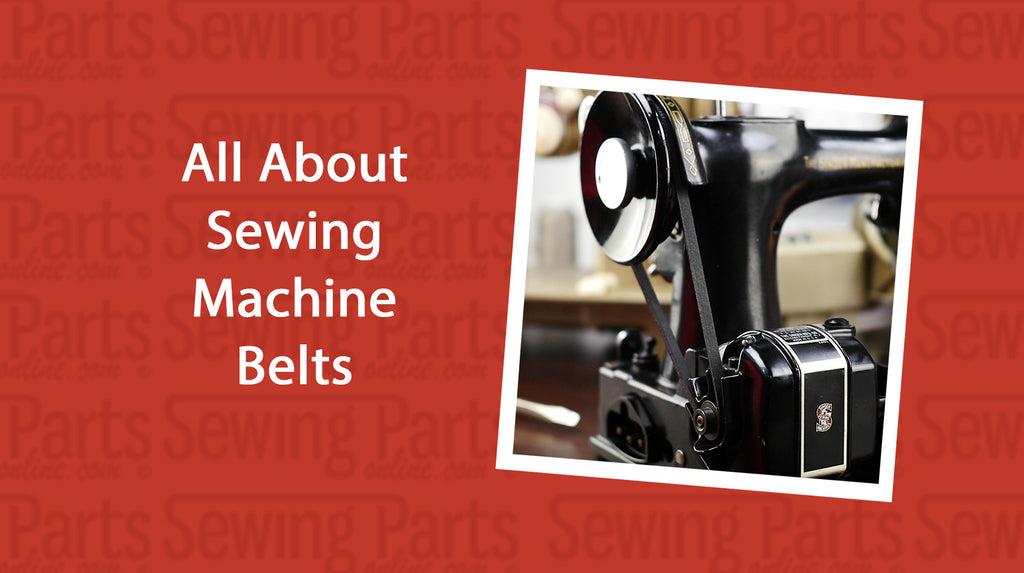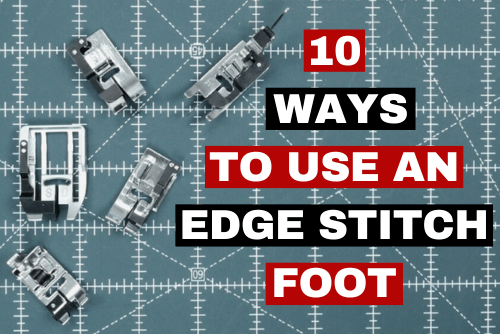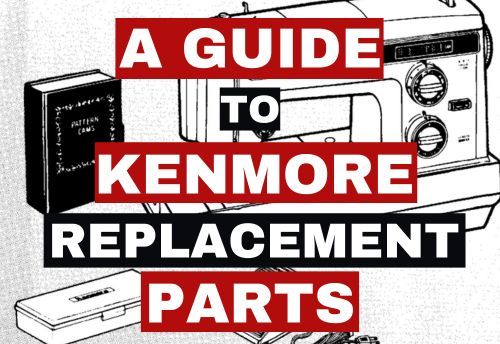Hey, Everyone! I’m Sarah at sewingpartsonline.com and today we’re going to talk about your sewing machine belt. They’re an important part of maintaining your machine. There are several different types of belts. There are V belts, lug belts, treadle belts, geared belts, round belts, and timing belts. In this video, we’re going to teach you the signs of a bad belt and how to find out which belt your machine uses. We’ll even show you how to install one. Let’s get started.
First, how do you know if you need a new belt? If your belt is on the outside of your machine, you’ll see obvious signs of disintegration, cracks, or excessive slack to the belt. If your belt is on the inside of your machine, you’ll feel it struggle to sew or it will stop sewing altogether. These are signs you’ve likely got a bad belt. You may even hear a clicking sound from too much slack. If your feed dogs or hook are out of time, you need a new timing belt.
To find a replacement belt for your machine, go to our website, www.sewingpartsonline.com, and click on “machine parts”. Click on the make of your sewing machine. Use the search box to find the model number of your sewing machine. Simply click “belts” to find all the belts compatible with your machine.
If that doesn’t work, we need to do some measuring. If your motor belt is on the outside of your machine, this is pretty simple.
If your machine’s motor is adjustable, loosen the motor screw and adjust the motor to the middle of the slot. Take a shoe string or twine and wrap it around the handwheel in the same spot that the belt would go.
Tie the shoestring tightly around the motor pulley exactly how your belt would go on your machine. Cut the shoe string or twine to remove it from your machine. Place it next to a ruler to measure the length. This measurement is the size of your belt.
Do not take your original belt off your machine to measure it. The measurement will not be accurate.
If your belt is on the inside of your machine, you can do the exact same thing as long as you don’t have a geared belt. You cannot measure geared belts with the “shoe string” method.
You must first gain access to your motor. To access your motor, refer to your machine’s service manual. If you don’t have the service manual for your machine, visit us at www.sewingpartsonline.com/sewing-machine-manuals.aspx.
It’s usually just one or two screws that you need to remove to access the belt or belts. Not all machines have belts so you need to consult your service manual first.
Now that you know the size of your belt, you need to determine which type of belt to buy.
If you have a treadle machine, you’re in luck. All you need is one of our universal treadle belts. It will fit every treadle machine ever made.
Now, I like to break belts into two groups, geared belts and not-geared belts. That sounds silly, but if your machine uses a geared belt, you have to use the exact belt made for your specific model. A geared belt has ‘teeth’ that fit inside the groove of the motor pulley. There isn’t any wiggle room.
Let’s take a closer look at these belts to understand the differences.
A V belt is tapered on the inside like the letter “v”. We highly recommend these belts because they fit perfectly into the groove of your motor pulley and perform very well.
A lug belt is easily distinguished by its teeth. These teeth are tapered on the inside and act like the groves on your tires. If a V belt isn’t available for your machine, this is the next best choice. A lug belt is not the same as a geared belt. Do not use a lug belt in place of a geared belt.
A round belt, a.k.a. a stretch belt, is designed to stretch to fit measurements within a set range. For instance, this one replaces belts measuring 12” to 15”. You’ll notice that this belt is round like your finger. It doesn’t fit very well into the groove of your motor pulley. If neither a V belt nor a lug belt is available for your machine, you can use a round belt. However, it won’t perform as well. It’s really a “last resort” belt.
Installing a V belt, round belt, or lug belt is easy. Simply loosen the motor screw and bring the motor as close to the handwheel as possible. The old belt should just slide off. Place the new belt around the motor and handwheel. Reset the motor to its original position and tighten the screw. Your belt should have between 1/4” and 1/2” of slack.
Timing and geared belts are easier to remove but require much more precision when installing. If you install a geared belt incorrectly, you risk throwing your needle bar out of time. Raise your needle bar to its highest point and mark it with a sharpie. Then, mark the highest cog on your motor pulley. This way, if anything accidentally moves, you know how to line the needle bar and the motor pulley back up so the timing is synced. Remove the old belt and slide on the new belt. Replace any parts you had to remove to get to the belt per your service manual.
I hope this was helpful. To buy a new belt for your sewing machine, visit us online at www.sewingpartsonline.com. If you want to come hang out with our sewing community, visit us on Facebook at www.facebook.com/sewingpartsonline, Pinterest, Instagram, ….we’re everywhere. Be sure to like this video, share this video, and subscribe for our next sewing video.








